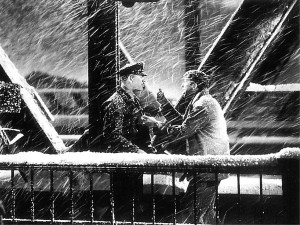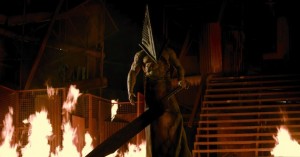TEN THINGS YOU PROBABLY DIDN’T KNOW ABOUT CINEMATIC SNOW
 “January 12, 1965. Very snowy that day. 7.2 inches of snow that day.” – Rain Man
“January 12, 1965. Very snowy that day. 7.2 inches of snow that day.” – Rain Man
1. Snow Business Hollywood, a leader in providing fake snow for movies, says they have 168 products they can use to create screen snow. What’s the advantage to filmmakers of using artificial snow on a film set? “You can control it,” says owner Roland Hathaway. “Also, you’re never dealing with the cold weather.”
2. To create the sound of swirling snow heard on Hoth in The Empire Strikes Back
Foley Artists recorded surf sounds and tinkered with the sound by raising and lowering the volume. The Empire Strikes Back was shot at Elstree Studios, Borehamwood, Hertfordshire, England, the same film studio where The Shining was made. As a result much of the fake snow used for Kubrick’s film was also used for the Hoth scenes.
3. Asbestos was often used as fake snow in Hollywood films in the 1930s and 40s. The White Christmas sequence in Holiday Inn—showing Bing Crosby singing the classic tune amid the falling snow—exposed the cast and crew to asbestos fiber.
4. The “snowy” maze near the conclusion of The Shining consisted of 900 tons of salt and crushed Styrofoam.
5. Fake snow was also used during the uncharacteristically snowless Denver shoot for Die Hard 2.
6. Sam Raimi learned some techniques about shooting in heavy snow or A Simple Plan from the Coen brothers, friends of his who had been responsible for Fargo.
7. It’s a Wonderful Life was shot in the sweltering heat of a Los Angeles summer in 1946, necessitating the need for fake snow. Instead of using cornflakes painted white—which was loud when stepped on—director Frank Capra and RKO studio’s head of special effects Russel Sherman invented a quiet—and sprayable—version by mixing foamite with sugar, water and soap flakes to create the winter wonderland of Bedford Falls.
8. The usually snowy Minneapolis/St. Paul International Airport was chosen as the location for the field and terminal scenes in Airport but the film’s producers had to use bleached sawdust as a supplement, to make up for the lack of falling snow, until a snowstorm hit the Twin Cities area during the production of the film.
9. A “beginner” model movie snow machine will set you back about £1000 ($1584.02 in Canadian dollars.)
10. To create blowing snow for a scene, throw laundry soap flakes or instant potato flake in front of a powerful fan. Be warned! Soap flakes can make the set slippery. To make laying snow mix 1⅓ cups of liquid starch, 4 cups of laundry soap flakes and several drops of blue food colouring. To add a sparkling effect, add glitter.

